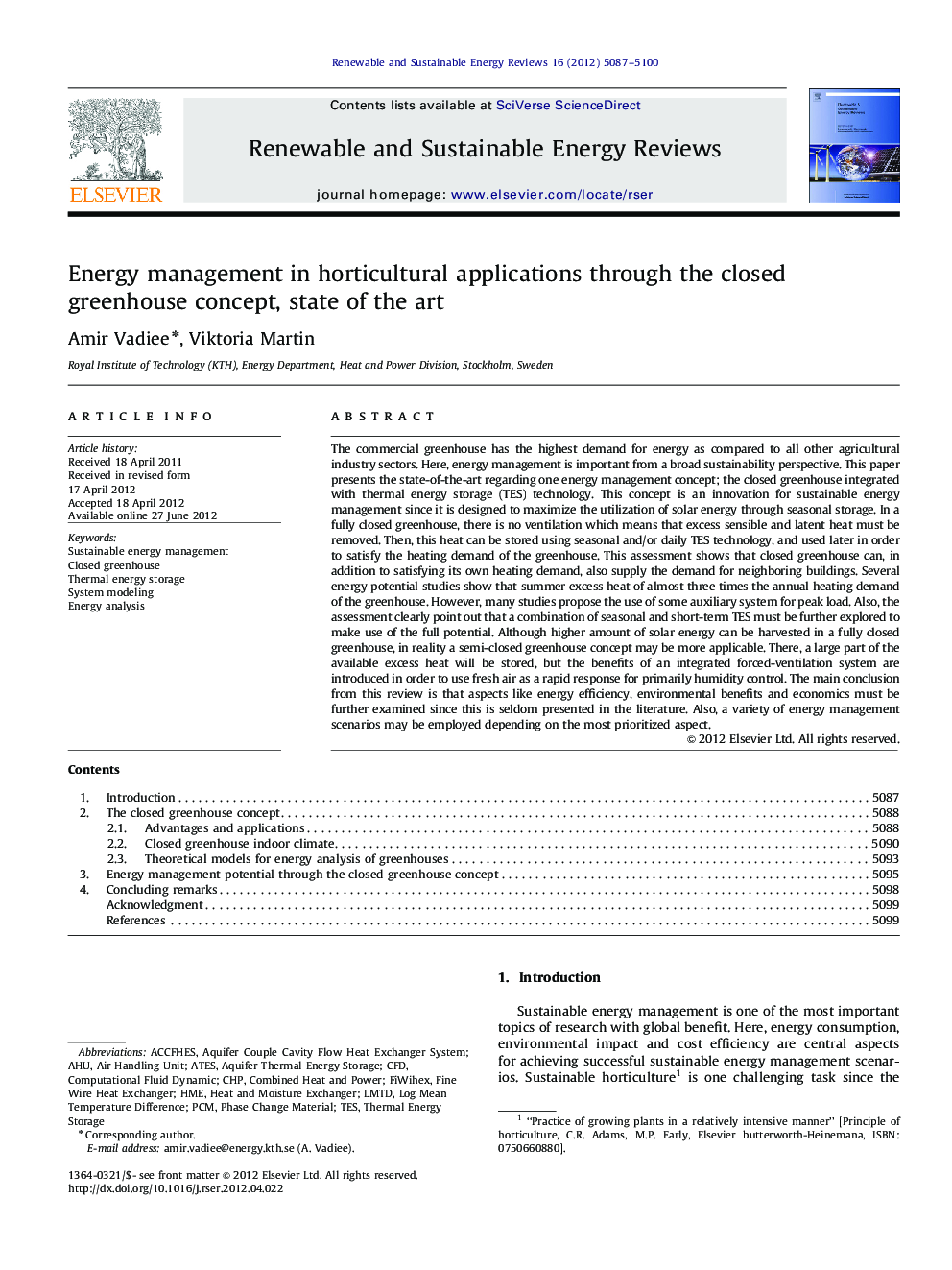| کد مقاله | کد نشریه | سال انتشار | مقاله انگلیسی | نسخه تمام متن |
|---|---|---|---|---|
| 1750940 | 1018406 | 2012 | 14 صفحه PDF | دانلود رایگان |
عنوان انگلیسی مقاله ISI
Energy management in horticultural applications through the closed greenhouse concept, state of the art
دانلود مقاله + سفارش ترجمه
دانلود مقاله ISI انگلیسی
رایگان برای ایرانیان
کلمات کلیدی
موضوعات مرتبط
مهندسی و علوم پایه
مهندسی انرژی
انرژی های تجدید پذیر، توسعه پایدار و محیط زیست
پیش نمایش صفحه اول مقاله

چکیده انگلیسی
The commercial greenhouse has the highest demand for energy as compared to all other agricultural industry sectors. Here, energy management is important from a broad sustainability perspective. This paper presents the state-of-the-art regarding one energy management concept; the closed greenhouse integrated with thermal energy storage (TES) technology. This concept is an innovation for sustainable energy management since it is designed to maximize the utilization of solar energy through seasonal storage. In a fully closed greenhouse, there is no ventilation which means that excess sensible and latent heat must be removed. Then, this heat can be stored using seasonal and/or daily TES technology, and used later in order to satisfy the heating demand of the greenhouse. This assessment shows that closed greenhouse can, in addition to satisfying its own heating demand, also supply the demand for neighboring buildings. Several energy potential studies show that summer excess heat of almost three times the annual heating demand of the greenhouse. However, many studies propose the use of some auxiliary system for peak load. Also, the assessment clearly point out that a combination of seasonal and short-term TES must be further explored to make use of the full potential. Although higher amount of solar energy can be harvested in a fully closed greenhouse, in reality a semi-closed greenhouse concept may be more applicable. There, a large part of the available excess heat will be stored, but the benefits of an integrated forced-ventilation system are introduced in order to use fresh air as a rapid response for primarily humidity control. The main conclusion from this review is that aspects like energy efficiency, environmental benefits and economics must be further examined since this is seldom presented in the literature. Also, a variety of energy management scenarios may be employed depending on the most prioritized aspect.
ناشر
Database: Elsevier - ScienceDirect (ساینس دایرکت)
Journal: Renewable and Sustainable Energy Reviews - Volume 16, Issue 7, September 2012, Pages 5087-5100
Journal: Renewable and Sustainable Energy Reviews - Volume 16, Issue 7, September 2012, Pages 5087-5100
نویسندگان
Amir Vadiee, Viktoria Martin,